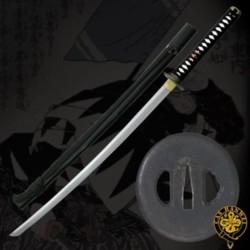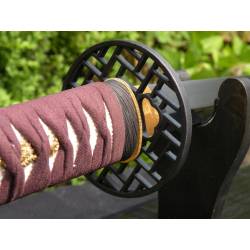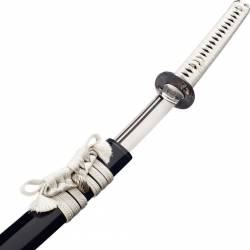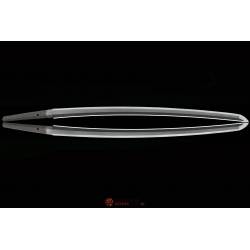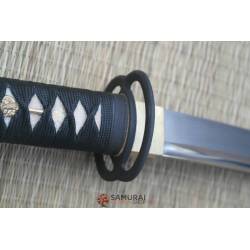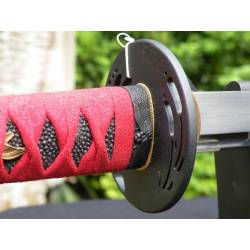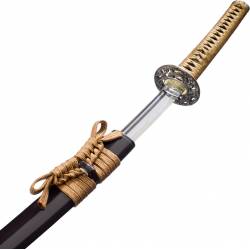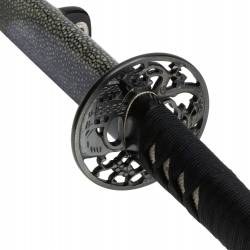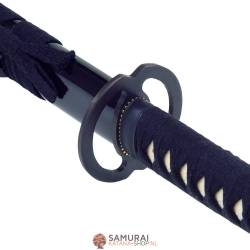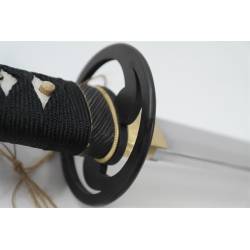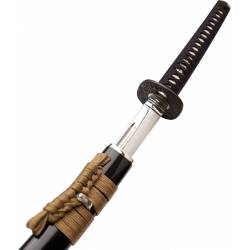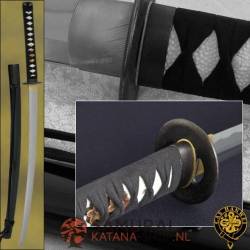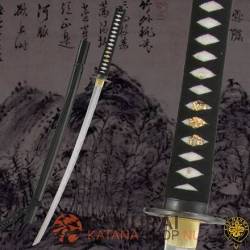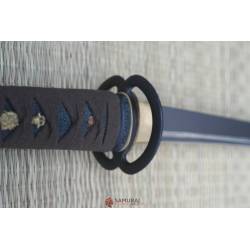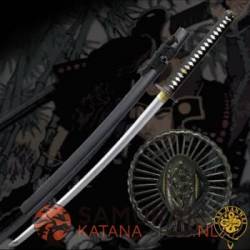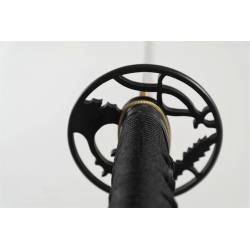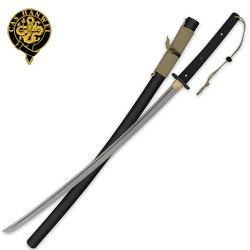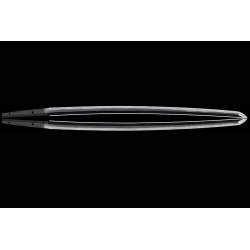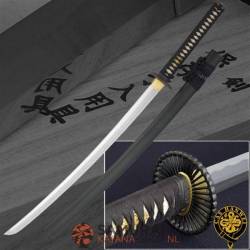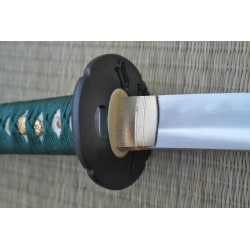Japanese Katana or Samurai Sword
Katana
A Japanese sword or katana was used by the Samurai, the class of warriors of ancient Japan. That is also the reason that a katana is also called a samurai sword.
The word katana actually means long sword and together with the wakizashi it was also called the daisho. Often a tanto or knife was also worn.
At the top of the social hierarchy was a group of warriors: the samurai. Like the swords of medieval knights, the katana was a symbol of samurai power.
The samurai lived according to the bushido, the code of honor of the samurai. This marked the warrior's way and required loyalty, faithfulness and honor to death. If a samurai lost his honor, he could recoup it by committing ritual suicide (seppuku). In fact, the term samurai meant 'he who serves' and were the warrior class of Japan from the 12th century to the late 19th century. The katana and the samurai became one because the sword determined whether you lived or died during a confrontation. Thus, by the spiritual beliefs of the samurai at the time, the sword was regarded as an extension of his soul.
Many people think that the katana was the samurai's primary weapon, but they also used spears, naganita (a Japanese halberd), nodachi (a long two-handed sword), and bows. The advantage of these weapons was a longer range and more effective at long range.
Despite all these weapons Still they always carried a katana, for example in case their other weapons were lost or broken in battle. And so the sword was designed to be drawn quickly.
Unlike most other single-edged swords, the sheath of the katana is made so that the blade of the sword points upwards. The idea behind this is simple: the samurai had to be able to draw his sword and mow down his enemy in one movement.

Buying Real Katana
You can easily buy a katana with the click of a button at the many sword webshop on the net. But do you immediately buy a really good sword? Does this sword do justice to the honor and respect that a real katana should deserve?
No, it really takes some deepening to think about different forges or suppliers to find a sword that suits you, meets the purpose with which you want to purchase it and of course has a good price and quality ratio. What I can tell you is that quite a bit of rubbish is sold as "real Japanese Sword".
If a seller cannot tell you whether a sword can be disassembled, and can also disassemble it yourself, whether the blade is full tang, and made of which type of steel, then the seller really knows nothing about swords and I personally would not buy it. Or at least sleep on it one more night.
The main reason for this is safety. If a sword is not properly assembled from the correct materials and has not had a quality mount, then it is a danger to do anything with it. Put these kinds of swords on a stand and leave them on for the rest of your life.
You can recognize a really high-quality functional sword by the type of steel, mounting quality, choice of materials, heat treatment and the suguta (design). For those in the know, the hataraki or liveliness of the hamon also plays a role, but this only applies to authentic nihonto.
With a real sharp katana you can cut a tatami if you master the right techniques and observe all safety precautions.
The wrap or tsuka-maki is an important indicator of whether it is a qualitative sword. It should be tight and wrapped in an existing traditional way. A good sword also has real ray skin under the winding. This looks like styrofoam at first. This ray skin or same gives grip to the winding so that it stays in place. This also gives grip to the user and the menuki or ornaments should be placed in the right places under the tsuka-ito.
Good materials with correct mounting quality certainly include the Habaki. This is a tapered collar that is mounted against the ha-machi and mune-machi. This ensures that the tsuka or handle can distribute its forces over the blade during handling. The habaki also ensures that the leaf is safe from moisture in the saya, because it must fit well in the koiguchi or opening of the sheath. The habaki also ensures that the sword is properly secured and cannot simply fall out of the sheath.

Katana Steel quality
A real sword must be made of a High Carbon Steel and has undergone a heat treatment. This means that the blade has been differentially hardened, creating a hamon or hardening line. This treatment makes the cut harder in relation to the back and will not break easily if you hit something hard. You can also get the edge sharper because it is very hard.
Authentic Japanese swords have always been folded during forging because the tamahagane was often impure and did not have the same hardness throughout the steel.
This tamahgane comes from a clay or tatara melting furnace and in this furnace, low-burning pine charcoal and iron sand are added each time. Ultimately, this hard metal type is created after days of maintaining this melting process.
Modern swords are often made of steel from blast furnaces and are very pure and homogeneous in steel properties. For that reason, it is not necessary to have a folded sword to have a strong blade. However, a folded sword often has a nicer appearance and does more justice to a real samurai sword. In my webshop you can buy various folded katanas, such as the bushido katana or the ronin katana. A real Paper Crane Tamahagane katana from Paul Chen is also available.
We also have a range of nihonto, these are real authentic antique Japanese swords with an NBTHK certificate. The range of these is subject to change because these are unique one-piece swords. A well-known swordsmith is Masamune, who lived in the 13th century. This is considered one of the best blacksmiths in Japan.


